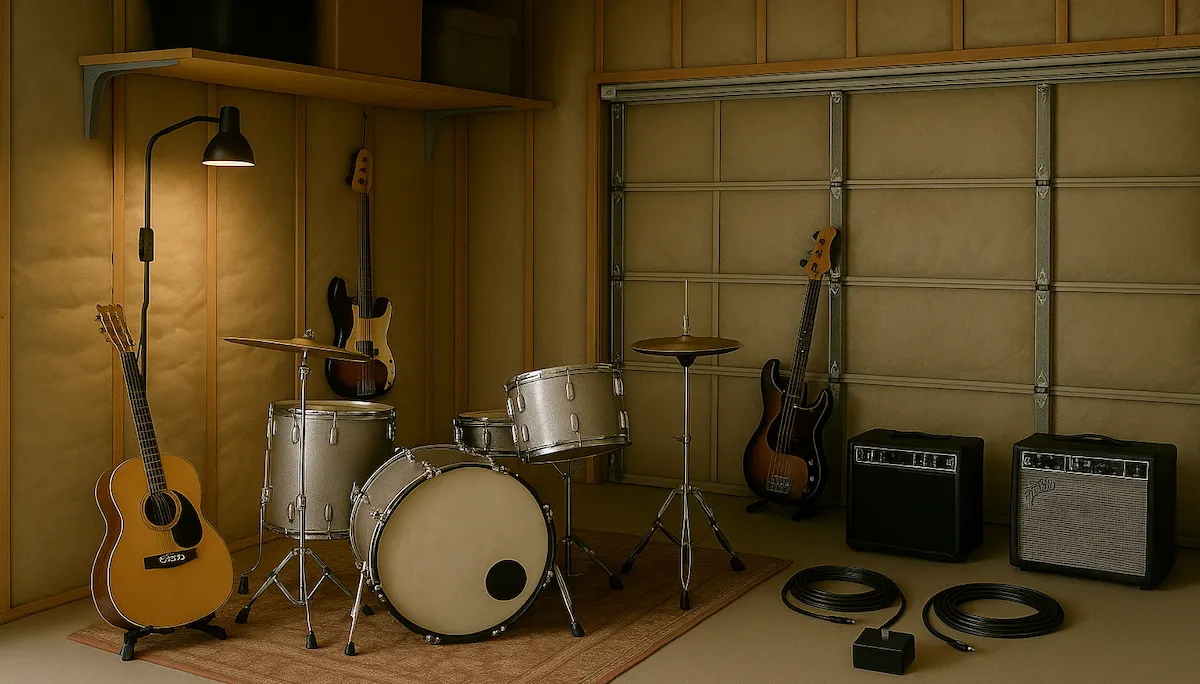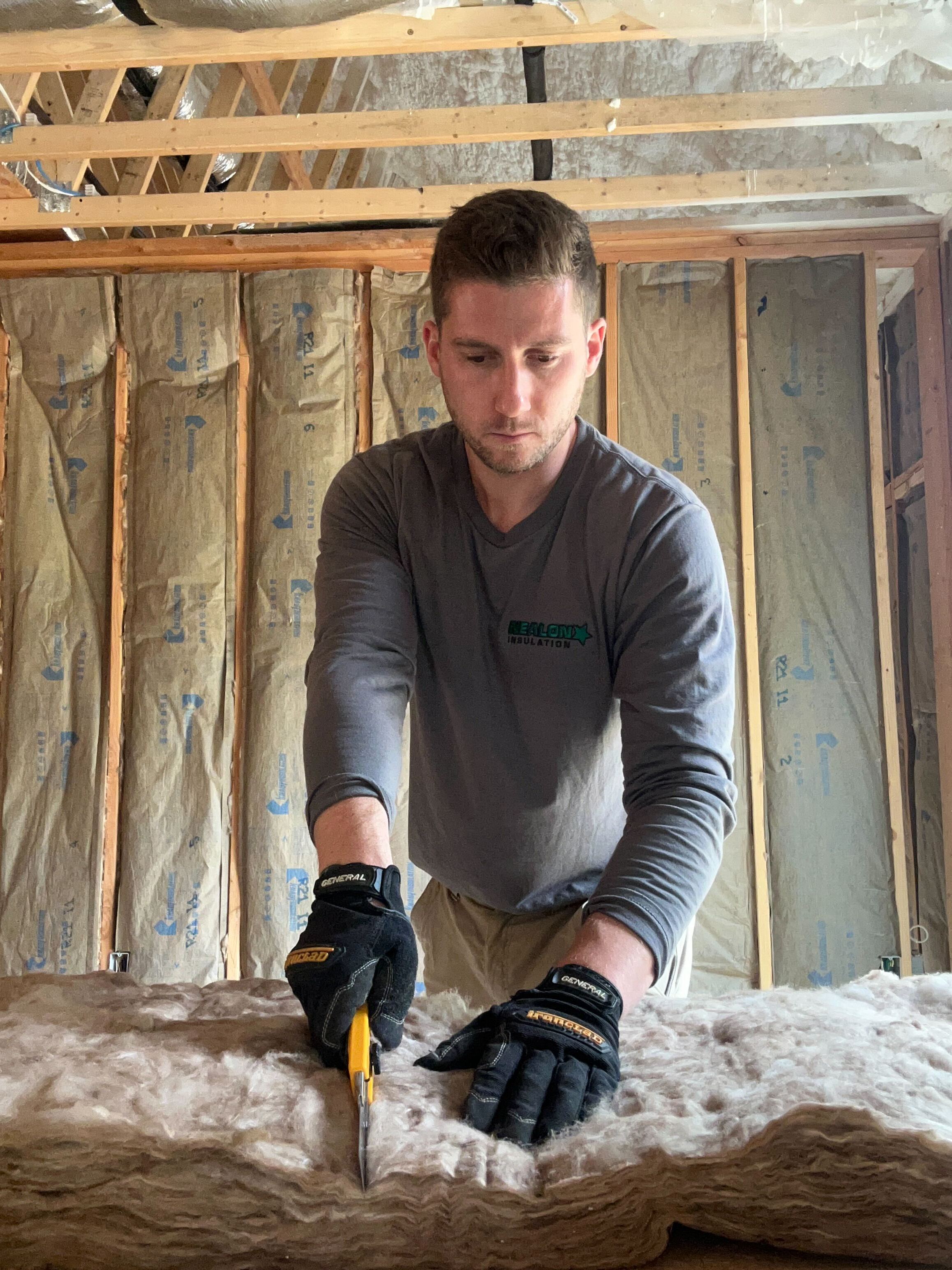What is the Best Insulation for Soundproofing?

Ever tried to binge your favorite show while the neighbor’s dog is barking, the kids are thundering around upstairs, or someone’s decided 7 AM is a great time for lawn care? Yeah—we’ve all been there. Noise pollution doesn’t just live outside; it creeps right through your walls, floors, and ceilings. And in older Connecticut homes, it’s even worse.
Here’s the thing: soundproofing isn’t just about luxury—it’s about sanity. Whether you’re working from home, trying to catch some sleep, or just want a little peace and quiet, reducing unwanted noise makes your home more comfortable, private, and livable.
Most people think of insulation as something that keeps you warm in winter and cool in summer. But the right insulation does more than regulate temperature—it’s also one of the best tools for blocking sound. If you're looking for soundproofing insulation for Connecticut homes—or just want to reduce noise between rooms—you’re in the right place.
Let’s dive into how insulation can turn your home into the quiet retreat it was meant to be.
Short on time? Listen instead!
Know the Lingo: STC, NRC, and R-Value
Before you start comparing insulation types, it helps to understand how soundproofing is measured—and spoiler: R-value isn’t one of them.
Here are the key terms to know:
- STC (Sound Transmission Class): Measures how well a material blocks airborne sounds like voices, TV noise, or traffic. The higher the STC rating, the better the material is at stopping sound from moving through walls, floors, and ceilings.
- NRC (Noise Reduction Coefficient): Measures how well a material absorbs sound within a room. NRC helps reduce echo and reverberation—especially useful in spaces with hard floors or high ceilings.
- R-Value: Measures thermal resistance—how well insulation resists heat flow. While R-value is critical for Connecticut’s energy efficiency needs, it doesn’t indicate how well insulation controls sound.
That said, some insulation products—like dense-packed cellulose or mineral wool—perform well in both categories. Just remember: for true soundproofing, you need to pay attention to STC and NRC, not just R-value.
Choose Your Soundproofing Fighter: Best Insulation Types Ranked
Not all insulation performs equally when it comes to noise control. If you’re serious about reducing sound transfer in your home—whether it’s footsteps from upstairs or barking dogs—you need the right material in the right spot.
A. Mineral Wool (Rockwool) – The Soundproofing Champ
If soundproofing were a sport, mineral wool would be the undefeated heavyweight. With some of the highest STC and NRC ratings out there, it excels at both blocking and absorbing sound. It’s also fire-, water-, and mold-resistant, making it perfect for interior walls, ceilings, and basements—especially in moisture-prone or older Connecticut homes.
B. Dense-Packed Cellulose – Best for Retrofits and Air Sealing
Dense-packed cellulose is eco-friendly and highly effective at dampening sound. It’s a great choice for older homes with hollow walls or limited access. It also provides excellent air sealing, which helps block airborne noise while improving energy efficiency.
C. Fiberglass – Budget-Friendly with Moderate Performance
Fiberglass is widely available and cost-effective. It offers decent sound absorption for interior walls but struggles with low-frequency or exterior noise. If you’re trying to quiet general household sounds on a budget, it can still do the job.
D. Spray Foam – Great for Sealing, Less So for Blocking Sound
Spray foam is excellent for sealing air leaks and improving energy efficiency, but it’s not ideal for soundproofing on its own. Closed-cell foam is dense and adds structure, but for blocking noise, you’ll want to pair it with another material like mineral wool or cellulose.
Bottom line: Mineral wool is the gold standard for soundproofing. But depending on your home’s layout, goals, and budget, cellulose or even fiberglass can be part of the solution—especially in combination.
Where to Add Soundproofing Insulation in a Home
Noise doesn’t care where it comes from—it just finds a way in. Whether it’s traffic, HVAC hum, or footsteps overhead, sound travels unless you stop it. Here’s where insulation makes the biggest difference:
- Interior Walls: Add insulation between bedrooms, bathrooms, and home offices to cut down on voices, plumbing sounds, and other room-to-room noise.
- Floors: In multi-story homes, insulating between floors reduces impact sounds like footsteps and dropped items.
- Ceilings: Especially important for finished basements or between floors, ceiling insulation absorbs both airborne and impact sounds.
- Basements and Garages: These often amplify noise. Insulating them helps buffer sound from HVAC units, tools, or vehicles.
Pro tip: In many older Connecticut homes, walls and ceilings are minimally insulated. Even small upgrades in these areas can deliver major acoustic improvements.
Soundproofing in Connecticut: Local Considerations
Connecticut homes often come with charm—and thin walls. If you live in a shoreline Colonial or a mid-century Cape, chances are your insulation isn’t doing much to stop sound.
Here are a few Connecticut-specific factors to keep in mind:
- Thin Walls Are Common: Older homes frequently have plaster or drywall with empty wall cavities. Dense-packed cellulose or Rockwool can be blown in with minimal disruption to add both sound and thermal protection.
- Humidity Is Real: Our climate brings moisture, especially near the coast. Opt for mold-resistant insulation like mineral wool in basements, bathrooms, and garages.
- Retrofitting Is Key: Full remodels aren’t always realistic. Dense-packed cellulose is ideal for soundproofing without tearing open walls.
Whether you’re quieting a home office, adding privacy to a bedroom, or blocking garage noise, the right soundproofing insulation makes a difference you can hear—and feel.
Final Verdict: What’s the Best Insulation for Your Soundproofing Needs?
So what’s the “best” insulation for soundproofing? It depends.
If you’re looking for maximum sound control—especially for low-frequency or exterior noise—mineral wool is the standout. If you're retrofitting an older Connecticut home and want a greener option, dense-packed cellulose is a great performer. For smaller budgets or less critical areas, fiberglass still has a role.
And while spray foam isn’t your go-to for blocking sound, it can boost performance when combined with other materials.
At Nealon Insulation, we’ve been helping Connecticut homeowners solve real problems—like noise, comfort, and energy loss—for over 40 years. We know what works, what doesn’t, and how to make your home quieter without the guesswork.
FAQs About Soundproofing Insulation
Can I add soundproofing insulation without removing my drywall?
Yes, you can add soundproofing insulation without removing drywall by using dense-pack cellulose. It’s installed through small holes in the wall, which are patched and painted after. This method works well for retrofitting older Connecticut homes without full demolition.
Will insulating just one room help reduce noise throughout the house?
Yes, insulating one room can reduce noise in that space, but it won’t significantly impact sound throughout the house. For broader noise control, you’ll need to insulate multiple areas like walls, ceilings, and floors.
Does soundproofing insulation help with loud HVAC systems or plumbing noise?
Yes, soundproofing insulation helps reduce HVAC and plumbing noise by absorbing vibration and blocking sound. Materials like mineral wool are especially effective around ducts and pipes, making them ideal for basements or near mechanical rooms.
What’s the best way to soundproof a finished basement?
The best way to soundproof a finished basement is to insulate the ceiling joists with mineral wool or cellulose. This blocks noise from upstairs. If walls are exposed, adding insulation there further improves sound control—ideal for living areas or home theaters.
Can I combine soundproofing insulation with thermal insulation?
Yes, you can combine soundproofing and thermal insulation using materials like mineral wool or dense-pack cellulose. These options provide both noise reduction and high R-values, making them ideal for boosting comfort and quiet in one upgrade.
Related Articles
Let's Work Together
Ready to transform your home into an energy-efficient haven? Schedule your free energy assessment today and experience the Nealon difference for yourself.



